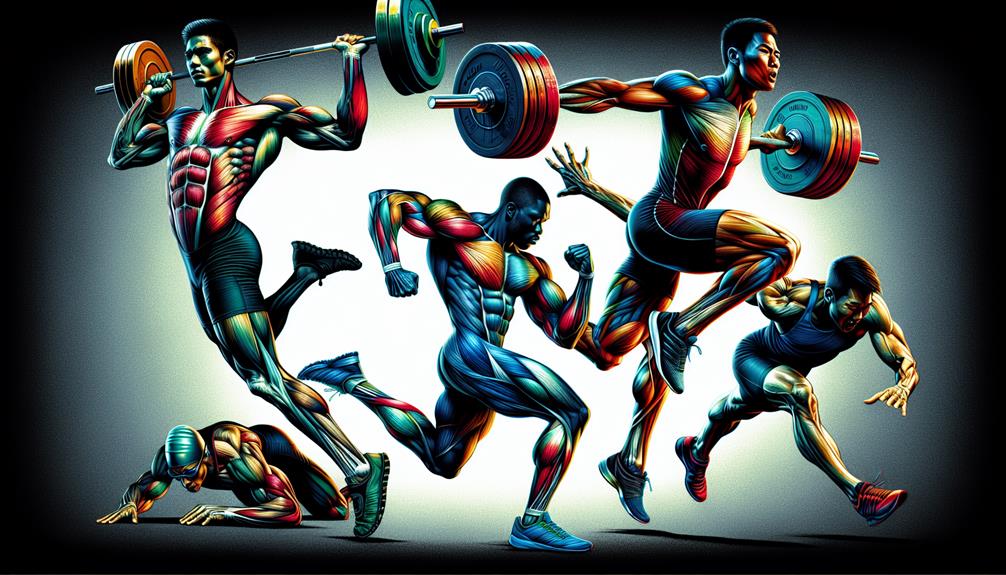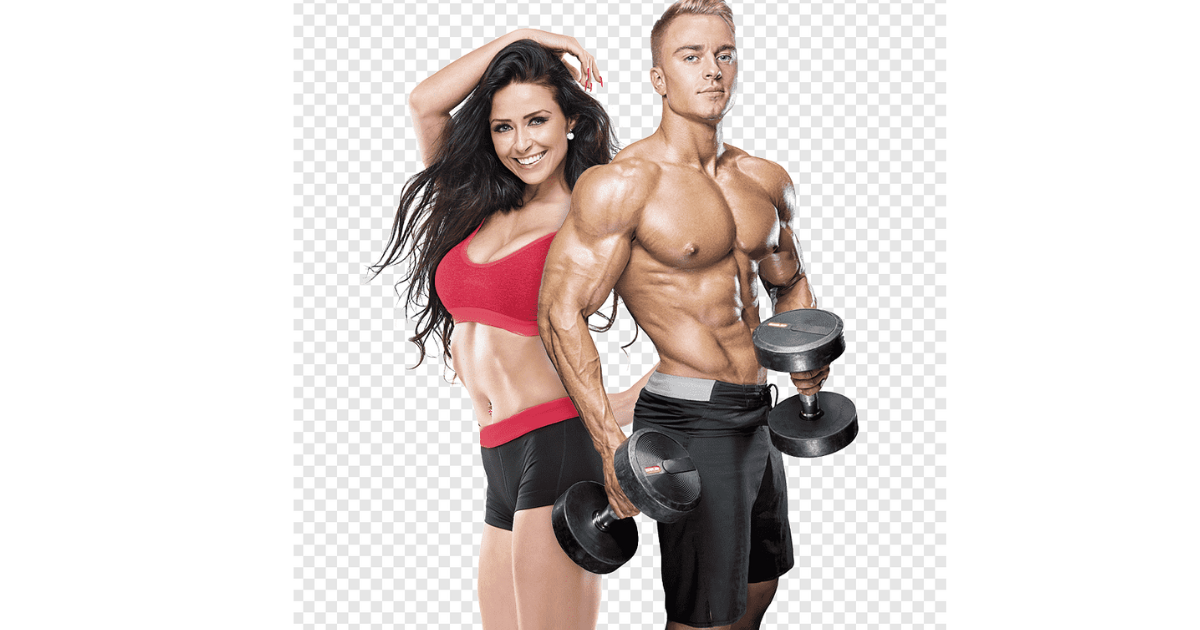Have you ever wondered why some people seem to make significant gains in their fitness levels while others struggle to see any improvement? The answer lies in understanding exercise physiology. By delving into the science behind training, you can unlock the secrets to maximizing your workouts and achieving your fitness goals more efficiently. From the way our muscles adapt to exercise to the cardiovascular responses our body undergoes, there are fascinating mechanisms at play that determine our physical performance. So, let's dive into the world of exercise physiology and uncover the science that can help you take your training to the next level.
Key Takeaways
- Exercise physiology is the study of how the body responds and adapts to physical activity.
- Understanding exercise physiology helps individuals make informed decisions about their training programs.
- Energy systems and metabolism play a crucial role in optimizing training and performance.
- Muscle adaptation, cardiovascular responses, and factors like injury prevention, nutrition, and hydration all contribute to physical performance.
The Basics of Exercise Physiology
Understanding the basics of exercise physiology is crucial for anyone looking to optimize their workouts and achieve their fitness goals. Exercise physiology is the study of how the body responds and adapts to physical activity. By understanding the acute responses and training adaptations that occur during exercise, individuals can make informed decisions about their training programs and maximize their performance gains.
Acute responses refer to the immediate changes that occur in the body during exercise. These responses include increased heart rate, dilation of blood vessels, and increased oxygen consumption. As you engage in physical activity, your body works to deliver oxygen and nutrients to your muscles more efficiently, allowing them to perform at a higher level.
Training adaptations, on the other hand, are the long-term changes that occur in response to regular exercise. These adaptations can include increased muscle strength and endurance, improved cardiovascular function, and enhanced flexibility. When you consistently challenge your body through exercise, it responds by making these beneficial adaptations to meet the demands placed upon it.
Energy Systems and Metabolism
The body's energy systems and metabolism play a crucial role in fueling physical activity and determining exercise performance. Understanding these systems is essential for optimizing training and performance.
The two primary energy systems involved in exercise are aerobic respiration and anaerobic metabolism. Aerobic respiration utilizes oxygen to break down carbohydrates, fats, and proteins into adenosine triphosphate (ATP), the body's main energy source. This process occurs in the mitochondria of cells and is highly efficient, allowing for sustained energy production during prolonged exercise.
On the other hand, anaerobic metabolism provides energy for high-intensity, short-duration activities when oxygen demand exceeds supply. It involves the breakdown of glucose through glycolysis, producing ATP without the need for oxygen. This system is essential for activities like sprinting and weightlifting but can only sustain energy production for a limited time due to the accumulation of metabolic byproducts, such as lactic acid.
During exercise, the body dynamically utilizes both energy systems, with their contributions depending on the intensity and duration of the activity. Endurance training can enhance aerobic capacity by improving oxygen delivery and utilization, while high-intensity interval training can boost anaerobic metabolism by increasing enzyme activity and muscle fiber recruitment.
Understanding Muscle Adaptation

As you delve deeper into the realm of exercise physiology, one aspect that deserves your attention is the fascinating process of muscle adaptation. When you engage in regular exercise, your muscles undergo significant changes in response to the demands placed upon them. Two important aspects of muscle adaptation are muscle hypertrophy and muscle atrophy.
Muscle hypertrophy refers to the increase in size and strength of your muscles. This occurs as a result of repeated resistance training or high-intensity exercises. When you challenge your muscles with progressively heavier loads, it causes microscopic damage to the muscle fibers. In response, your body initiates a repair process that involves the synthesis of new proteins, leading to an increase in muscle fiber size. Over time, this results in muscular growth and improved strength.
On the other hand, muscle atrophy refers to the decrease in muscle size and strength. This can occur when your muscles are not regularly stimulated through exercise or when you experience prolonged periods of inactivity, such as during immobilization or bed rest. Without the regular stress of exercise, your body undergoes a process known as muscle protein breakdown. This leads to a decrease in muscle fiber size and overall muscle mass.
Understanding muscle adaptation is crucial for designing effective exercise programs and achieving desired fitness goals. By incorporating appropriate resistance training and avoiding prolonged periods of inactivity, you can promote muscle hypertrophy and prevent muscle atrophy, ensuring optimal muscle function and overall fitness.
Cardiovascular Responses to Exercise
During exercise, your cardiovascular system undergoes a series of physiological responses to meet the increased demands placed on your body. These responses include changes in heart rate, stroke volume, and blood flow to the working muscles. Understanding these responses can help optimize your training and improve your overall cardiovascular fitness.
One important measure of cardiovascular response to exercise is heart rate variability (HRV). HRV refers to the variation in the time interval between consecutive heartbeats. Higher HRV is generally associated with better cardiovascular health and fitness. Regular aerobic exercise has been shown to increase HRV, indicating a more efficient and adaptable cardiovascular system.
Another key aspect of cardiovascular response to exercise is oxygen consumption rates. Oxygen consumption, or VO2, is a measure of how much oxygen your body uses during exercise. As exercise intensity increases, so does your oxygen consumption. This allows your muscles to produce more energy to meet the increased demands of exercise.
To summarize the cardiovascular responses to exercise, the table below provides an overview of the key changes that occur during different exercise intensities:
| Exercise Intensity | Heart Rate | Stroke Volume | Blood Flow |
|---|---|---|---|
| Low | Increases | Slightly | Slightly |
| Moderate | Increases | Increases | Increases |
| High | Increases | Increases | Significant |
Factors Influencing Physical Performance

Understanding the factors that influence your physical performance is essential for optimizing your training and improving your overall cardiovascular fitness. Two key factors that play a crucial role in your performance are injury prevention and nutrition and hydration.
Injury prevention is vital to maintaining a consistent training routine and avoiding setbacks. To minimize the risk of injuries, it is important to engage in proper warm-up and cool-down exercises, as well as incorporate strength training to improve muscular balance and stability. Additionally, wearing appropriate footwear and using proper form during exercises can help reduce the likelihood of injuries.
Nutrition and hydration are also critical factors that impact your physical performance. Consuming a well-balanced diet that includes carbohydrates, proteins, and healthy fats provides the necessary fuel for your body to perform optimally. Adequate hydration is equally important, as it helps maintain proper muscle function and prevents fatigue and cramping.
To enhance your physical performance, consider working with a registered dietitian or sports nutritionist to develop a personalized nutrition plan. They can help ensure you're consuming the right nutrients at the right times to support your training goals.
Frequently Asked Questions
How Long Does It Take to See Results From Exercise?
You may wonder how long it takes to see results from exercise. Factors such as your fitness level, consistency, and intensity play a role. Tracking your exercise progress can help you gauge your results over time.
What Is the Best Type of Exercise for Weight Loss?
The best type of exercise for weight loss depends on your goals. Cardio exercises like running or cycling burn more calories during the activity, while strength training builds muscle and boosts metabolism. High-intensity interval training combines both for maximum fat burning.
Can Exercise Help With Mental Health and Well-Being?
Exercise has been shown to have numerous benefits for mental health and well-being. Regular physical activity can help alleviate symptoms of depression and improve stress management. It is a powerful tool for enhancing overall mental wellness.
Is It Necessary to Take Supplements for Optimal Exercise Performance?
You might think that taking supplements is necessary for optimal exercise performance, but the truth is, their effectiveness is often exaggerated. Plus, they can have potential side effects. It's best to consult with a professional before relying on them.
How Does Age Impact Exercise Physiology and Performance?
As you age, there are natural changes in your exercise physiology that can impact your performance. Your body undergoes age-related adaptations to exercise, which can affect things like muscle mass, cardiovascular function, and overall endurance.
Conclusion
In conclusion, understanding exercise physiology is crucial for effective training. It's like unraveling the intricate mechanisms of a well-oiled machine. By comprehending the energy systems and metabolic processes at play, we can optimize our workouts and push our bodies to new limits. Additionally, recognizing how muscles adapt and the cardiovascular responses to exercise allows us to tailor our training programs for maximum performance. So, dive into the science, unlock your potential, and watch your fitness goals become a reality.













